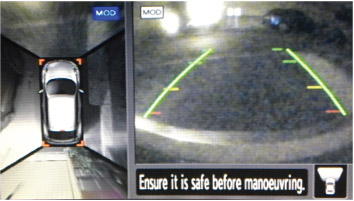Sensing
Electronic devices can sense the world, converting a wide variety of physical phenomena into electrical signals that communicate useful information. Such devices have capabilities similar to the five human senses: hearing (microphones), seeing (cameras), touch (piezoelectrics), and smell and taste (chemical sensors), although sometimes our human senses are better. However, electronic devices can sense things we cannot. For example, Figure 2 shows how ultrasound allows us to ‘see’ inside our bodies, infrared images allow us to ‘see’ patterns of heat and terahertz images allow us to see through opaque coverings.

The electrical signals generated by sensors can be processed in many useful ways. For instance, there are many sensors in modern cars linked to displays and alarms that inform the driver of the engine speed and temperature, whether or not the doors are properly shut, if all the passengers are wearing seatbelts, of the proximity of other vehicles when parking, and so on (Figure 3).

